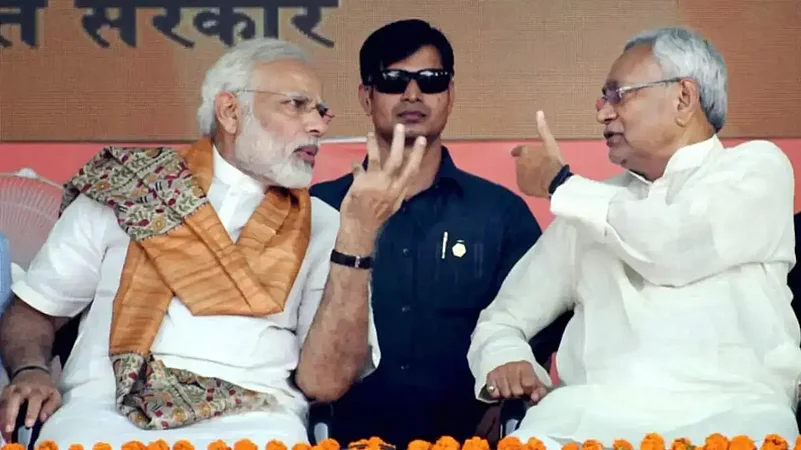In yet another stellar move, Nitish Kumar pulled the rug under the feet of the Bharatiya Janata Party (BJP) by withdrawing from the 20-month-old coalition government he had forged with the saffron party in Bihar.
Nitish Kumar, a politician known for having no permanent friends or foes, has previously achieved stunning power shifts. While ruling Bihar with the BJP, he quit the National Democratic Alliance (NDA) and tied up with the Rashtriya Janta Dal (RJD). Then he deserted the RJD to join the BJP-led coalition again.
What appeared to be triggered by RCP Singh’s corruption saga and his subsequent ouster from the party, Nitish Kumar’s move appears to be well thought out as over the past few months, he overtly expressed his growing disgruntlement against BJP by his conspicuous absence from a number of meetings that were chaired by Prime Minister Narendra Modi or Union Home minister Amit Shah.
On Sunday, Kumar skipped a meeting of think tank NITI Aayog that was called by Modi. Surprisingly, the meeting was attended by 23 chief ministers including Trinamool Congress supremo Mamata Banerjee who harbours brimming ambitions of becoming prime minister.
Similarly, Kumar was not seen in a meeting of chief ministers convened by Shah to discuss Independence Day celebrations. He also stayed away from Modi's farewell banquet for departing President Ram Nath Kovind on July 22, as well as the swearing-in of his successor Droupadi Murmu three days later.
Moreover, in the recent past, JD(U) and BJP have been indulging in a war of words over multiple issues. Sanjay Jaiswal, BJP state president, has regularly been in a reproach-mode against the Nitish-led state government, and not to forget that Nitish Kumar also clashed twice with Bihar assembly speaker and BJP leader Vijay Kumar Sinha.
BJP and JD(U)’s relationship had been developing fissures over time, but they began to deteriorate quickly after BJP leader and former Bihar deputy chief minister Sushil Kumar Modi, who is known for being a close aide of Nitish, was pushed out of state politics and nominated to Rajya Sabha in December 2020.
Although Nitish Kumar’s repeated boycotts of the meetings and a series of confrontations sent signals of how discontented he was becoming with the BJP’s central leadership, the bigger troubles from the saffron party started brewing for Nitish Kumar in his home turf.
Sources tell Outlook that BJP leaders in Bihar were not happy with Nitish Kumar's style of functioning who had successfully kept them at bay and didn’t allow them to function with authority. However, the BJP central command kept observing the developments as a mute spectator as they knew Kumar’s formidable standing and importance in Bihar politics.
“BJP’s regional bandwagon in Bihar was persistently trying to infiltrate JD(U)’s social base that comprises Maha Dalits and Extremely Backward Castes (EBC),” says Manindra Thakur, a political analyst.
The EBCs account for nearly 30 per cent of Bihar’s voters and the voter base is a decisive factor in electoral battles. BJP’s efforts of wooing EBCs could have gradually cost Nitish his grip and clout and it would have ultimately become a tool for the BJP to throw him out of power.
“Brewing with impatience, the local BJP leadership in Bihar hastily wanted to make inroads to Nitish Kumar’s base, a move that certainly became the arduous point of crisis between the JD(U) and the saffron party. By adapting these maneouvres, BJP dug a chasm for themselves,” says Thakur, who teaches at Jawaharlal Nehru University (JNU).
Amidst all the tumult, Nitish Kumar has time and again stood dauntingly as an impenetrable fortress for the BJP. A local BJP youth leader from Bihar, not wishing to be named, tells Outlook, “Looking at the state of affairs, there is a strong feeling in our circles that we [BJP] will not be able to come to power in Bihar in years to come, at least in a coming decade. Our road ahead is perturbed with a long struggle.”
















